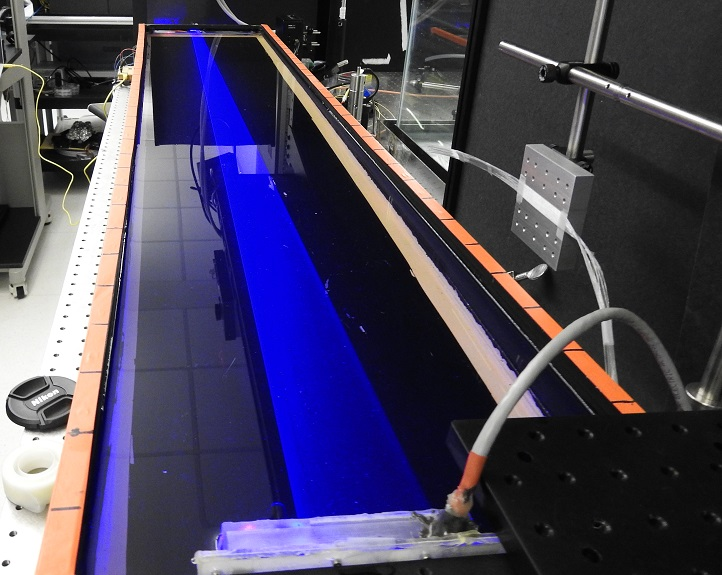Mar 20 2020
Researchers at KAUST have been developing a system that is capable of transmitting energy and light simultaneously to underwater energy devices.
 This 1.5-m-long experimental setup was used to test the effectiveness of a submerged temperature sensor to charge and transmit instructions to a solar panel. Image Credit: © 2020 Filho et al.
This 1.5-m-long experimental setup was used to test the effectiveness of a submerged temperature sensor to charge and transmit instructions to a solar panel. Image Credit: © 2020 Filho et al.
The use of self-powered internet of underwater things (IoUT) that decode data and harvest energy carried by light beams can improve communication and sensing in the oceans and seas.
Currently, KAUST researchers are solving a few of the several difficulties faced while using the technology in dynamic and harsh environments.
Underwater acoustic and radio wave communications are already in use, but both have huge drawbacks. Acoustic communication can be used over large distances but lacks stealth (making it detectable by a third party) and can only access a small bandwidth. Furthermore, radio waves lose their energy in seawater, which limits their use in shallow depths. They also require bulky equipment and lots of energy to run.
Jose Filho, Master’s Student, KAUST
According to Abderrahmen Trichili, the co-first author of the study, “Underwater optical communication provides an enormous bandwidth and is useful for reliably transmitting information over several meters. KAUST has conducted some of the first tests of high-bit-rate underwater communication, setting records2 on the distance and capacity of underwater transmission in 2015.”
Under the guidance of Khaled Salama, Filho, Trichili, and their colleagues explore the use of simultaneous lightwave information and power transfer (SLIPT) configurations to transfer data and energy to underwater electronic devices.
SLIPT can help charge devices in inaccessible locations where continuous powering is costly or not possible.
Jose Filho, Master’s Student, KAUST
In one of the experiments, the researchers successfully charged and transmitted instructions over a 1.5-m-long water tank to a solar panel on an immersed temperature sensor.
The temperature data were recorded by the sensor, which then stored it on a memory card and transmitted it to a receiver when information in the light beam directed it to do so.
As part of another experiment, the team charged the battery of a camera immersed at the bottom of a tank supplied with Red Sea through its solar panel within an hour and a half using a laser source that was partially submerged and externally powered. When fully charged, the camera could stream one-minute-long videos back to the laser transmitter.
These demonstrations were the first stand-alone devices to harvest energy, decode information and perform a particular function—in this case temperature sensing and video streaming.
Khaled Salama, Researcher, KAUST
At present, the KAUST researchers are working to deploy underwater SLIP configurations. They are looking for solutions to prevent the effects of turbulence on underwater reception and resorting to the use of ultraviolet light for transmissions that experience underwater obstacles.
Additionally, they are creating smart underwater optical positioning algorithms that could be useful in locating relay devices installed to expand the communication ranges of IoUT devices.
The research of the KAUST team, as well as the other scientists in the field, could eventually result in the deployment of self-powered underwater sensors for monitoring climate change impacts on coral reefs, tracking oil pipelines, and detecting seismic activity. Furthermore, it may also help develop compact autonomous robots for wider-scale and more precise underwater search and rescue operations.